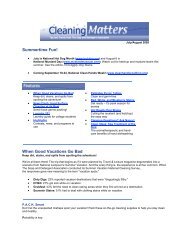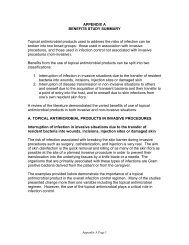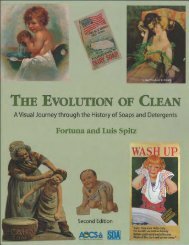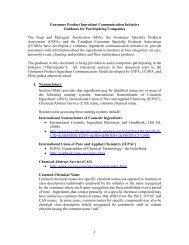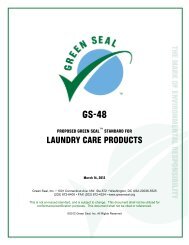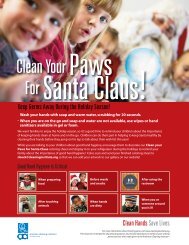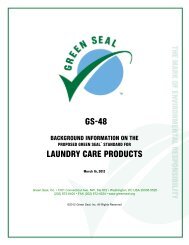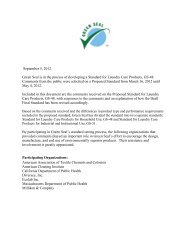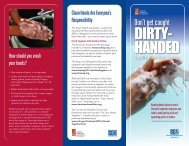subchapter c -- federal hazardous substances act regulations
subchapter c -- federal hazardous substances act regulations
subchapter c -- federal hazardous substances act regulations
You also want an ePaper? Increase the reach of your titles
YUMPU automatically turns print PDFs into web optimized ePapers that Google loves.
animals described below. This category is<br />
similar to EPA's Group B, IARC's Group 2, or<br />
ANSI's Categories 2 and 3. Evidence derived<br />
from animal studies that has been shown not to<br />
be relevant to humans is not included. For<br />
example, such evidence would result when<br />
there was an identified mechanism of <strong>act</strong>ion<br />
for a chemical that causes cancer in animals<br />
that has been shown not to apply to the human<br />
situation. It is reasonable, for pr<strong>act</strong>ical<br />
purposes, to regard an agent for which there is<br />
”sufficient” evidence of carcinogenicity in<br />
animals as if it presented a carcinogenic risk to<br />
humans.<br />
(i) ”Limited evidence” of carcinogenicity<br />
in humans. The evidence is considered limited<br />
for establishing a causal relationship between<br />
exposure to the agent and cancer when a<br />
causal interpretation is credible, but chance,<br />
bias, or other confounding f<strong>act</strong>ors could not be<br />
ruled out with reasonable confidence.<br />
(ii) ”Sufficient evidence” of<br />
carcinogenicity in animals. Sufficient<br />
evidence of carcinogenicity requires that the<br />
substance has been tested in well-designed and<br />
-conducted studies (e.g., as conducted by<br />
National Toxicology Program (NTP), or<br />
consistent with the Office of Science<br />
Technology Assessment and Policy (OSTP)<br />
guidelines) and has been found to elicit a<br />
statistically significant (p



